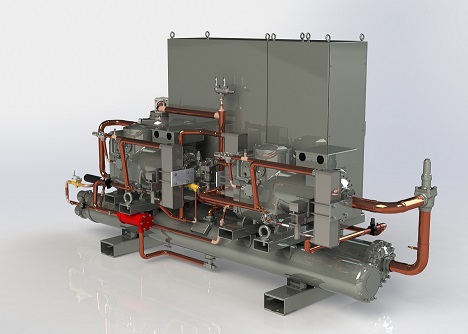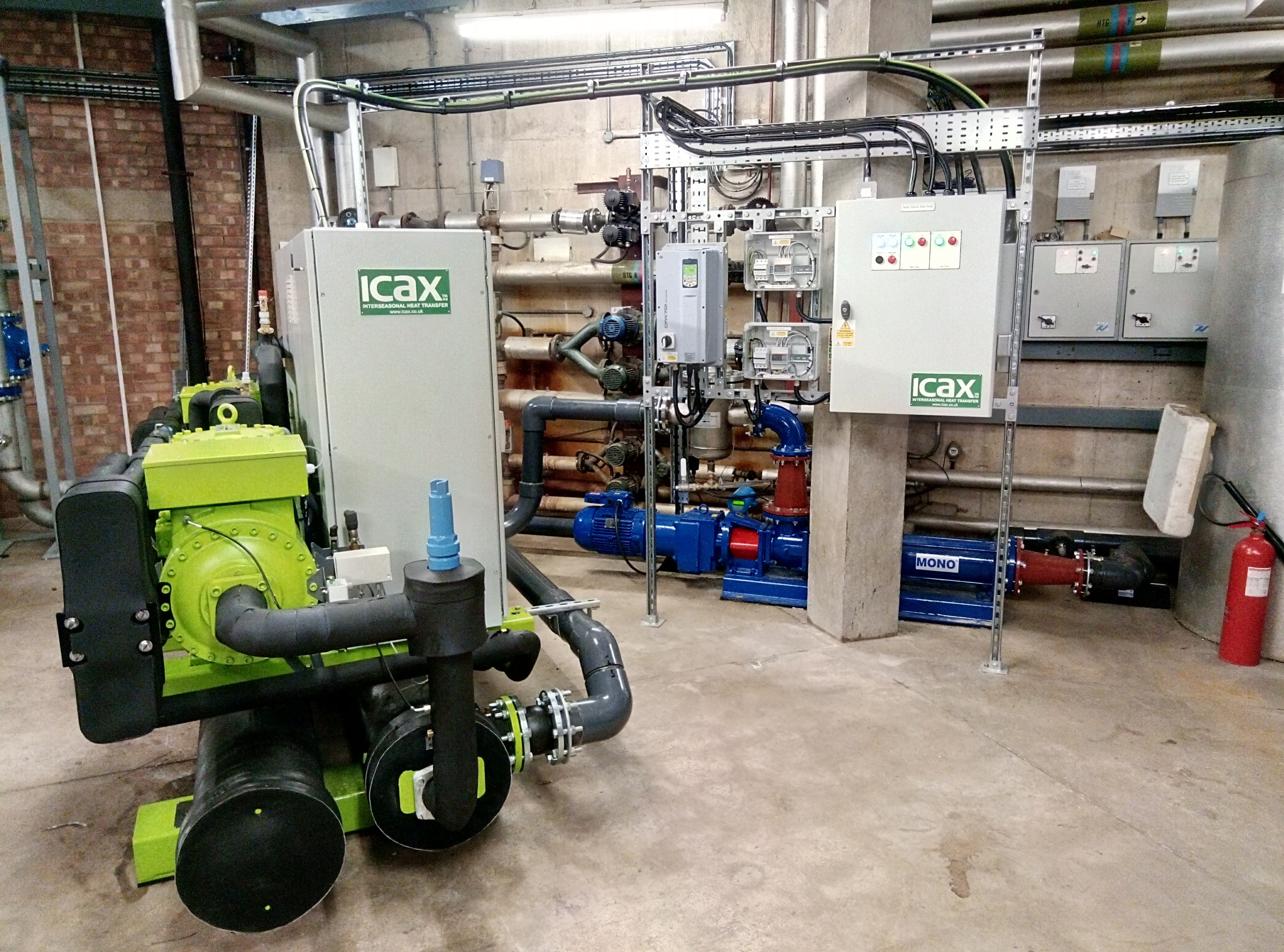High Temperature Heat Pumps – for Retrofits
The coefficient of performance of a heat pump will generally improve the lower the output temperature it is asked to deliver: therefore the designer aims for a lower temperature heat emitter system such as underfloor heating where 40°C is sufficient to provide comfortable room temperatures. However, if a heat pump is to be used in an existing building with limited heat emitters for the heat load, such as standard radiators, then it will be appropriate to specify a high temperature heat pump to avoid the disruption that would be caused by refurbishing the heat emitter systems throughout the building.
There are now ground source heat pumps capable of delivering output temperatures of 80°C which is more than sufficient for hot water needs and to warm a building with standard sized radiators. Although the CoP will fall if output temperatures are raised to 80°C, a well designed inverter-driven high temperature heat pump with a good control system, including weather compensation, will only deliver 80°C when it is required: otherwise it will modulate the heat pump to deliver lower temperatures – at a higher efficiency – when the heating load is below peak requirements.

ICAX high temperature water source heat pumps are now being used, or currently being installed, in the following retrofit projects:
- Balanced Energy Network, London South Bank University
- Robinson College, Cambridge
- Maritime House, Shoreham Port
- Consort Estate, Southwark
- Wyndham Estate, Southwark
- Newington Estate, Southwark
Coefficient of Performance – CoP
The key to the efficiency of a heat pump is the Coefficient of Performance: the “CoP”. In spite of the first law of thermodynamics, which tells us that energy can neither be created nor destroyed, a GSHP in a good installation can yield over four units of heat for each unit of electricity consumed. The heat pump is not creating this energy, but merely separating a medium temperature from the ground into hot (which can be used for heating) and cold (which can be returned to the ground).
The CoP will vary with each installation, but the lower the output temperature to the heat distribution system the higher the CoP will be. If an output temperature of 65°C is needed to heat radiators the CoP is likely to fall to a level of only 3.0. If the heat distribution is to a well designed underfloor heating system that works well at an output temperature of 50°C then the CoP can rise to a level above 4.
The input temperature is also critical to the CoP of the heat pump. The higher the input temperature from the ground, the lower the amount of work needed from the heat pump, the higher the CoP will be. In fact, the critical factor is the “uplift” between the source temperature and the output temperature. Therefore a GSHP may be more efficient in the autumn than in the depths of winter.

Advantages of Heat Pumps
Heat pumps save money. Heat pumps are much cheaper to run than direct electric heating. They are cheaper to run than oil boilers and can be cheaper than running gas boilers. Because heat pumps can be fully automated they demand much less work than biomass boilers.
Heat pumps save carbon emissions. Unlike burning oil, gas, LPG or biomass, a heat pump produces no carbon emissions on site (and no carbon emissions at all, if a renewable source of electricity is used to power them). As the electric grid decarbonises the carbon emissions from using a heat pump falls each year.
Heat pumps save space. There are no fuel storage requirements.
Heat pumps are safe. There is no combustion involved and no emission of potentially dangerous gases. No flues are required.
Heat pumps require less maintenance than combustion based heating systems.
Heat pumps can provide cooling in summer, as well as heating in winter.

Advantages of Ground Source Heat Pumps
The key advantage of using a GSHP is that the coefficient of performance is higher than an ASHP in winter, because the temperature in the ground is higher than the ambient air temperature.
Another advantage of using a GSHP is that the coefficient of performance for cooling is much higher than for an ASHP in summer, because the temperature in the ground is lower than the summer air temperature.
Planning permission is also easier as a GSHP can be located out of sight and makes virtually no noise. As a GSHP has fewer moving parts and is located inside buildings and is likely to enjoy a longer working life of up to 25 years.
Advantages of using Interseasonal Heat Transfer
An Interseasonal Heat Transfer installation is considerably more efficient than an unassisted GSHP because an IHT system draws heat from a warm Thermalbank instead of drawing heat from cold ground.
Interseasonal Heat Transfer: Heat Storage and Heat Pumps
ICAX has introduced a radical new mechanism for collecting surplus solar heat in the summer, storing it in Thermalbanks, and releasing it via heat pumps to heat buildings in winter: Interseasonal Heat Transfer.
By using ThermalBanks for thermal energy storage ICAX enables its heat pumps to start with a ground temperature of 25°C, instead of starting with an autumn ground temperature of 10°C. This doubles the CoP of the heat pump from the standard figure of 4 up to 8 and transforms the economics, and carbon saving, of using a GSHP.
See also: GSHP Breakthrough
See also: Banking on IHT
See also: Renewable Cooling
See also: Ground Source Energy
See also: Professor David MacKay endorses heat pumps
See also: Cash grants for domestic heat pumps



